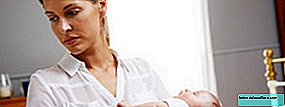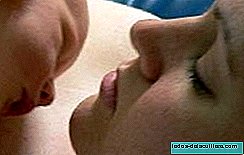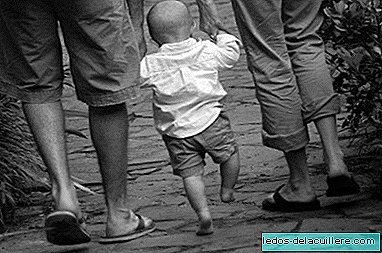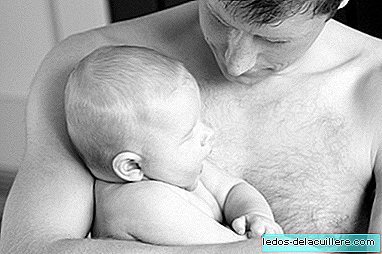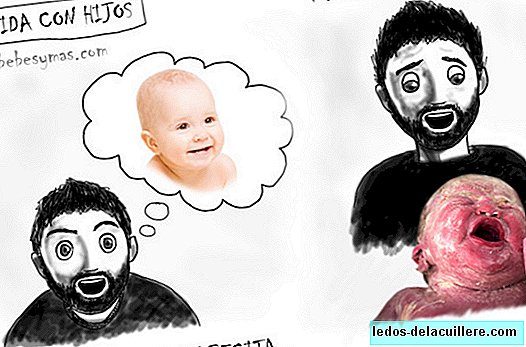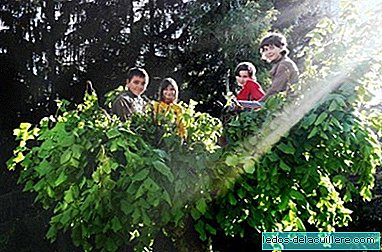
Today we finish the interview with the creative child learning specialist Isabel Fernández del Castillo, a woman who, since the publication of her work "The Birth Revolution" has continued to research and work now in the field of educator training.
In the first and second part of this extensive interview we talked with her about the cerebral hemispheres and the construction of human beings' thoughts since childhood, with special emphasis on the need that the physical and sensory experience in Nature has for the children.
I've heard you talk about the child's ecosystem, and it's a term that I love, can you explain to readers what you mean by this?
Most people already understand what an ecosystem is when we talk about nature; if you want to save the lynx, you do not act on the lynx, but on its habitat. If there is no habitat, there is no lynx. It is also understood when we talk about childbirth, breastfeeding or parenting. When the environment is appropriate, physiology and instinct can manifest. You just have to see how a newborn behaves if it is in an appropriate environment: they find and hook themselves to the chest in a perfect way. It is prodigious, the intelligence of nature in action.
Are there suitable environments and environments that are not for children?
It's about extending that concept further. The small child mainly needs solid emotional roots, and then wings, that is, autonomy to have that intense experience in the real world, and much experience of nature.
Is the opposite happening today?
Many children are now pushed prematurely into emotional autonomy, while their autonomy in daily life and activities has been limited to a point never seen before in history.
Not only that, they are also entering the virtual world prematurely, without having thoroughly experienced the real world.
I was inspired by your reflection on what we do to learn the map before the territory talking about how children are offered learning about the natural and social environment, can you give us some clues about how children should really be able to learn?
When you learn what a “tree” is in school, you will see about twenty children coloring the corresponding picture on a card. It is pathetic, honestly.
The child is designed to experience the tree: climb on it (when it is old), play in its shade, listen to the noise of the leaves when it is windy, pick up the fallen branches to make a cabin, eat its fruit, if it is a fruity Or collect the acorns and germinate them, observe the leaves in autumn when they dry and fall, marvel at the leaves and flowers when they sprout in spring, draw it ... Then you can study the tree in science class, but after having had the physical and sensory experience, learning acquires another quality. First you have to explore the territory, then you can understand the map. That is authentic "knowledge of the environment."
How important is Nature for the child to grow up intellectually and emotionally healthy?
I loved Nils Bergman's statement "the natural ecosystem of the newborn is his mother's lap." It is like that. Taking another step, it is easy to understand that the natural ecosystem of humanity is nature, at least to some extent. But the measure is getting smaller. Humanity has lost contact with nature because it has lost contact with its own. If there is a future on this planet, it happens to feel "part of" and not "owners of" the Earth. And that feeling of belonging is acquired in the early experiences of fusion with the mother, and in the experience of nature, which is also our mother.
And if we live in a city and barely have time between school and work, what can we do to give the child an environment as appropriate as possible?
Between black and white there are many intermediate shades. It is a matter of finding the one that is feasible at all times. It is important that children, and also we, live and have a reference, even occasionally, of what is wild nature, without any human intervention. As far as possible. In everyday life, sometimes we have more options than we see: you can choose between going to a park substitute with synthetic soil, or walking 3 blocks and going to one that has trees, plants, sand, and if you have puddles, better .
I understand, we should opt for more natural leisure, especially thinking of children. Can you give us more suggestions?
We can spend Saturday afternoons at the mall, or take the commuter train and go cycling to the countryside, or to a small town. At home we can neutralize the child for hours in front of the TV, or let him play with real objects, with real people. We can make you live in the world of plastic toys, or offer other more authentic experiences. Actually, we have more options than we imagine.
Of course, Isabel, there are more options that we can surely achieve with a little imagination and commitment.
We greatly appreciate Isabel Fernández del Castillo the interview she has given to Babies and more and we will continue investigating proposals to change Education and offer children the healthiest, freest and most complete training possible to enable them to develop their full potential.



